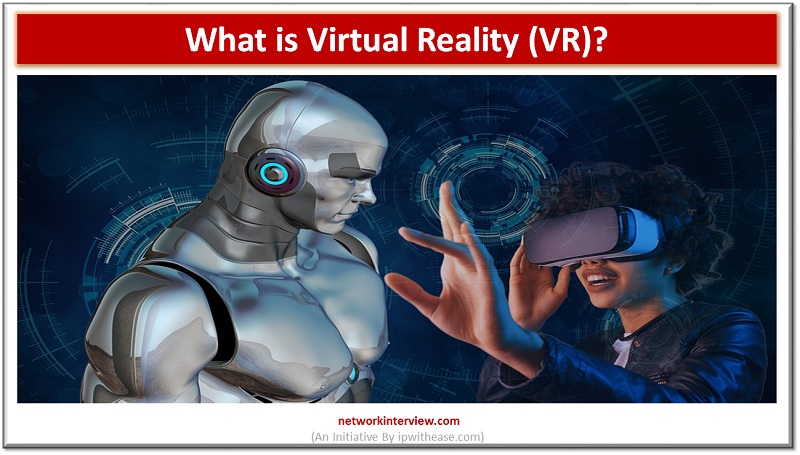
What is Virtual Reality (VR)?
Are you wondering what all the buzz around Virtual Reality (VR) is about? VR is rapidly becoming a major part of our lives, from gaming to entertainment to education. In this article, we will explore the basics of virtual reality, including what it is, its need, types, benefits, challenges, applications, the difference between VR and AR, and the future of VR. Let’s dive in.
What is Virtual Reality?
VR is a computer-generated environment that simulates a realistic experience. It is an immersive and interactive experience that replicates real-world scenarios. It is like being present in the environment that you are interacting with, such as a game, a movie, or a virtual world.
VR is different from other forms of entertainment, such as 3D movies, because it creates an interactive 3D environment. It is also different from augmented reality (AR), which is a technology that overlays digital objects in the real world.
The technology behind VR is complex. It involves creating a 3D environment with the help of computer graphics, sensors, and software. The user interacts with the environment through a headset, which is connected to a computer. The headset is equipped with a display that produces 3D images, and the user can manipulate the environment by moving their head.
What Is the Need for Virtual Reality?
VR is becoming increasingly popular because it offers a unique, immersive experience. It is being used in a variety of industries, such as gaming, entertainment, education, healthcare, and more.
VR allows users to interact with a 3D environment, which can be used for training and education. For example, students can use VR to explore a virtual world, such as the inside of a human body. VR can also be used for rehabilitation and therapy, such as physical and cognitive therapy.
VR also has a lot of potential in gaming. It allows players to immerse themselves in the game and interact with the environment. This can make the game more engaging and immersive, and it can offer a unique gaming experience that is not possible with traditional gaming.
Types of Virtual Reality
VR can be divided into two main categories:
- Non-immersive VR: This type of VR is used mainly for gaming and entertainment. It uses a headset and a controller to interact with the environment.
- Immersive VR: This type of VR is used mainly for training and simulation. It is a more realistic experience, and it uses a headset, sensors, and controllers to interact with the environment.
Benefits of Virtual Reality
VR offers many benefits, such as:
- Immersive experience: VR provides an immersive experience that allows users to feel as if they are present in the environment they are interacting with.
- Cost-effective: VR is a cost-effective way to create immersive experiences without having to invest in expensive hardware or software.
- Versatility: VR can be used for a variety of applications, such as gaming, entertainment, education, healthcare, and more.
- Enhances creativity: VR can be used for creative purposes, such as creating art and music.
Challenges of Virtual Reality
VR is not without its challenges. Some of the challenges include:
- Health risks: One of the biggest challenges is the potential health risks associated with VR. The use of VR can cause dizziness, nausea, and eye strain.
- Expensive hardware: VR requires expensive hardware, such as headsets and computers, which can be expensive.
- Limited content: There is a limited amount of content available for VR, which can be a challenge for developers.
Applications of Virtual Reality
VR is being used in a variety of industries and applications, such as:
- Gaming: VR is being used in gaming to create immersive experiences.
- Education: VR is being used in education to create virtual environments for learning.
- Healthcare: VR is being used in healthcare to create simulations for training and rehabilitation.
- Entertainment: VR is being used in entertainment to create immersive experiences, such as virtual concerts and movies.
Difference Between VR and AR
VR and AR are two technologies that are often confused. While both technologies are used to create immersive experiences, there are some key differences:
- VR creates a completely immersive experience, while AR overlays digital objects in the real world.
- VR is used mainly for gaming and entertainment, while AR is used mainly for navigation and visualization.
Future of Virtual Reality
The future of VR is bright. It is becoming increasingly popular, and it is being used in a variety of industries and applications. It is also becoming more affordable, which is making it more accessible to the masses.
Some of the potential applications of VR include creating virtual events, such as concerts and conferences, and exploring virtual worlds. It can also be used in healthcare, such as for therapy and training.
Conclusion
VR is a technology that is rapidly becoming a part of our lives. The future of VR is bright, and it is only going to become more popular and accessible.
If you’re looking to explore the world of virtual reality, there are several resources available, such as VR headsets and tutorials. So, what are you waiting for? Get started with VR today and explore the world of possibilities.
Continue Reading:
Top 10 Networking technology trends
Top 10 Trends of Software Development
Tag:New technology



